Learn about volume and capacity
Image
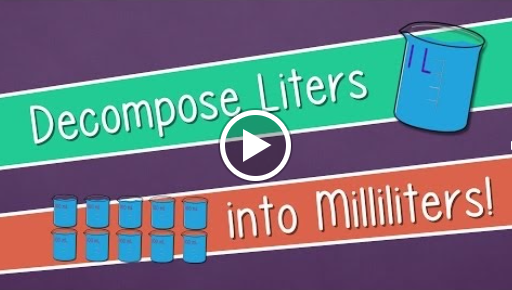
In this video students will learn about volume and capacity. Students will be shown how to decompose milliliters into liters. The video talks about how capacity and volume relate.

In this video students will learn about volume and capacity. Students will be shown how to decompose milliliters into liters. The video talks about how capacity and volume relate.
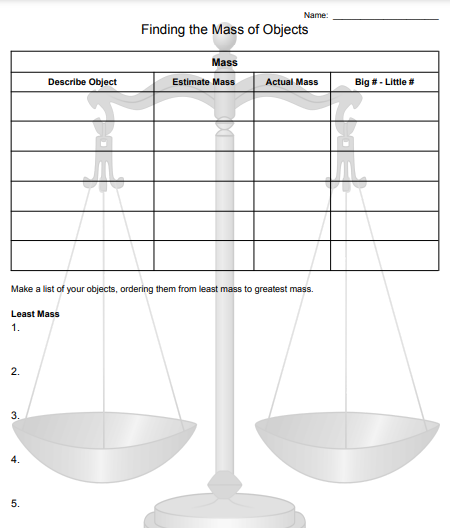
In this worksheet, students will take everyday objects from the classroom and use balance scales to find the mass. The students will first describe the object and then estimate the mass. They will then weigh the object and write down that actual mass. Finally, they will find the difference between the actual mass and the estimated mass. Once students are finished they will sort the mass from lightest to heaviest. The main purpose of this assignment is to have students make estimates and then use actual scales to find the mass.
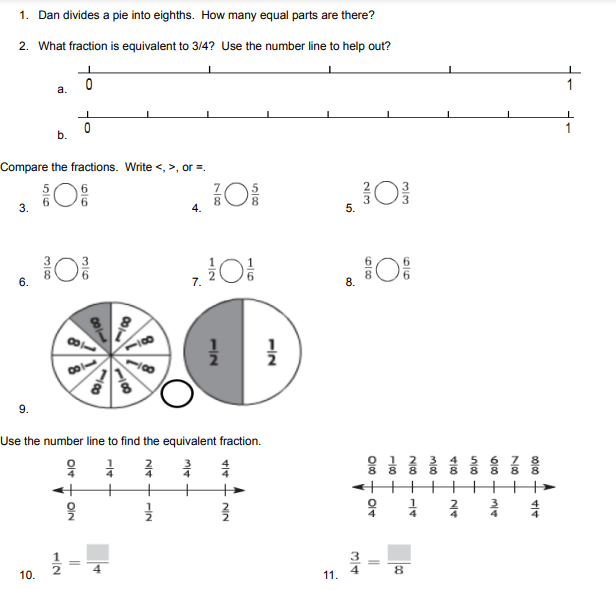
In this equivalent and comparing fractions review worksheet students will demonstrate their understanding of fractions. Students will illustrate their knowledge of comparing fractions using number lines and pie charts, the butterfly or cannon method of comparing fractions, a few word problems that compare fractions,s and finally demonstrate that they understand that a fraction with a denominator of 1 will be a whole number and a fraction that has the same denominator as the numerator is equal to one.
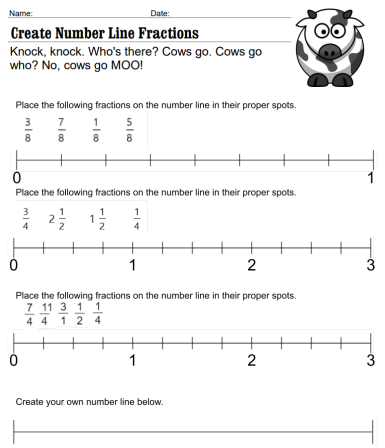
In this fractions worksheet, students will correctly place fractions on a number line. Mixed fractions are included. Students will then create their own customized number line with fractions.
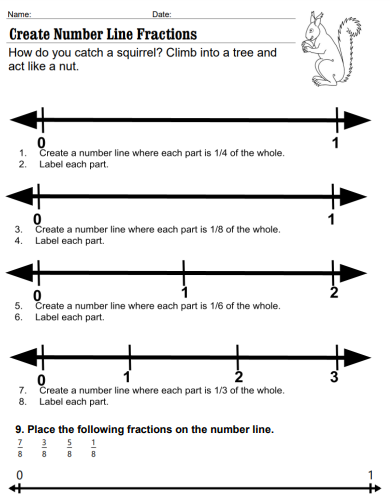
In this 3rd Grade worksheet, students will create fractions on number lines. They will label each part of the fraction.

In this 3rd-grade math activity, students will use three colors and design a pattern in a 5 x 5 grid. They will then determine the fractions of each color. At the bottom of the sheet, students will find fractions from a group of animals and flying machines.
This is a pretty cool 3d animation comparing the different depths of water bodies all the way down to the Marianas Trench. This would be a cool video to show during lessons in oceanography or when discussing plate tectonics.
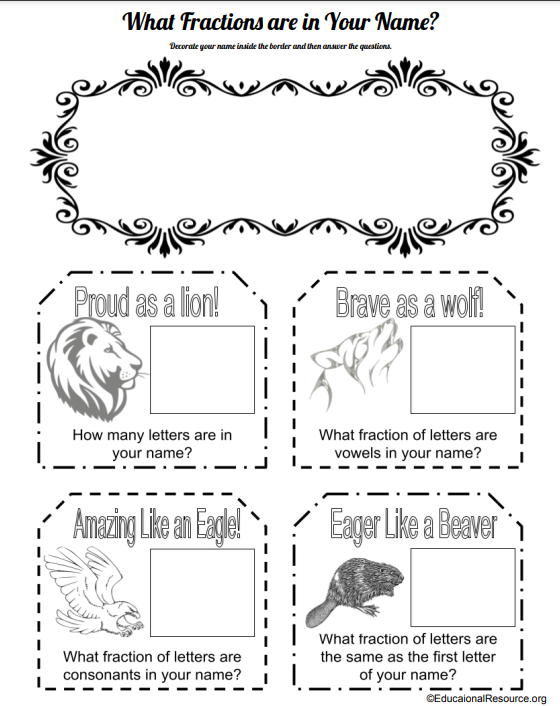
I use this elementary math activity to reinforce the concept of fractions of items. In this case, the items or objects are the letters in their name. First students will write their first and last names inside a decorative border. Next, they count how many letters total, how many vowels and consonants their names contain, and how many letters are the same as the first letter in their names. They will then create fractions based on their answers. This is also an activity to subtly or not so subtly build self-esteem.

This fractions worksheet is designed to reinforce the concept that fractions are shapes or objects divided into equal parts or pieces. Students are first asked what each part of a divided shape is equal to. Then they have to make a fraction based on the shaded area. Next students are presented with shapes that are divided into 1/5 and have to decide whether or not the shape was evenly divided. Finally, they are given 2-word problems designed to make a student think about what each part of a divided shape or object actually means.
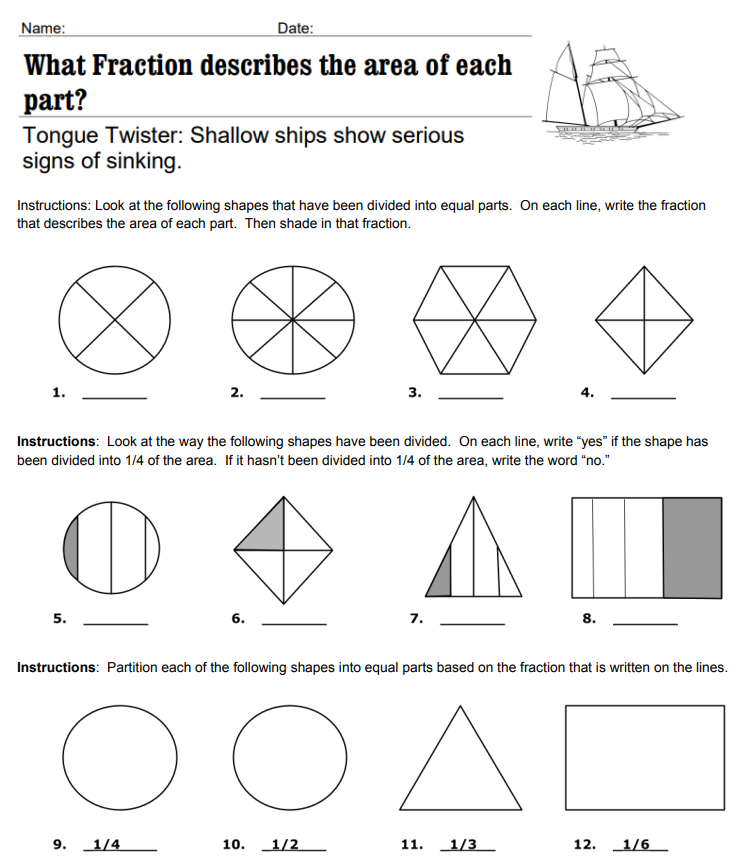
In this worksheet, students will look at shapes and determine whether or not they have been divided equally. Students will also have a chance to divide shapes into equal parts.